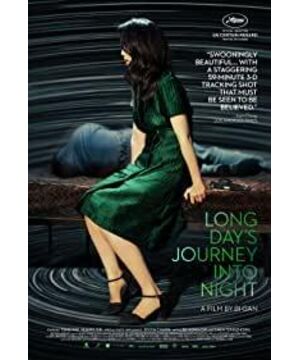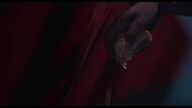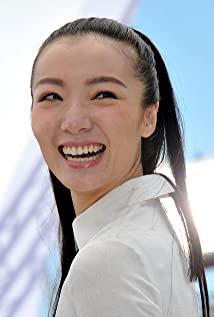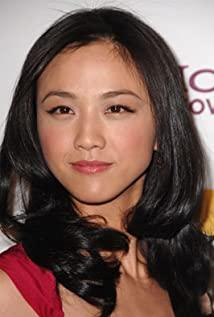After watching "The Last Night on Earth", my heart is full of doubts: how did the aura become a craftsmanship? (How does capital ruin creation?) How does landscape become fiction? What is especially lamentable is, where did the sensibility in Bi Gan's images go?
Simply stating the demise of sensibility in the film as a fact is clearly unsatisfactory—especially when it is so comprehensive and so intriguing. Fortunately, things are not elusive, because when we mention a certain "craftsmanship", there is no doubt that there is a text behind it, which is the aura of "Roadside Picnic". "Roadside Picnic" is so similar to "Last Night on Earth", full of intricate connections: the characters, the structure, even the camera, and they all take place in Carey. By comparing the two, a mind as stupid as me must be able to grasp the texture behind this demise to some extent—so I immediately started working on it. (And this work also saves us from playing a symbolic puzzle game inside a film.) So let's start with specific memories of two films - "Roadside Picnic" left, "Earth" right.
A character as a starting point for comparison might be a good choice:
Chen Sheng/Luo Hongwu
Xiaoweiwei-weiwei/white cat-little white cat
Mother - Zhang Xi / Wan Qiwen - Chen Huixian
Old doctor/white cat mother
Next are some environments:
tunnel/tunnel
Residence in the mine / Residence in the mine
train/train
Kaili Landscape (Day/Rain Ji)/Kaili Landscape (Night/Heavy Rain)
Old building/building ruins
And finally some other factors:
In a dream, Miao people playing reeds in Zhenyuan/Dong nationality songs that appear many times in the soundtrack
Poetic imagery appears in the image/Related symbols appear repeatedly in the image
Reading Poems on TV/Character Lines Like Poems
…………
Although not all; but when these are played out one by one from the mind, all the answers have clues.
Let's put aside the performances of star-professional actors and not discuss them. We will only focus on the setting of the characters and find out how the characters with the "distancing effect" are formed. The first characters to appear in "Roadside Picnic" are Chen Sheng, the drunkard and Xiao Weiwei. Chen Sheng came from the tunnel to Kaili under the light of the rainy sky, and heard the dizzy drunkard say that Xiao Weiwei was taken away by the savages , so he ran to Xiaoweiwei's house and pried the door. Different from Luo Hongwu and Wan Qiwen who came back to Kaili from other places, we can immediately feel that the characters in the roadside picnic are Kaili people (who live in Kaili); The performances, the authentic Kaili dialect, and the clear separation of the poetic language from the everyday language undoubtedly greatly enhanced this dwelling; on the contrary, the performances of Huang Jue and Tang Wei matched the pan-poetic lines. The flattening and symbolization of space in the last film (explained in detail later), to a large extent, turned the characters in "The Last Night on Earth" into products in the context of alienation. The characters have no background, lack of history, and have rigid personalities, more like a vague skiai than a living person, as in Hiroshima Love. We all know that alienation itself is understandable, but it constitutes a part of the damage to the image's sensibility in "Earth". This is because this detached gesture conflicts with Bi Gan's implicit intention of the image. In any case, Bi Gan's images, which attempt to inherit the great tradition of film materiality, are essentially inhabitants; otherwise, what is Carey?
Unsurprisingly, however, from "Roadside Picnic" to "Earth", in fact, the situation of the natural landscape in the film itself has also undergone great changes. In the same way, we do not go into the reasons behind it. Perhaps the intervention of capital has affected the production ideas, such as changing from a real scene to some relatively large-scale art settings, etc. In short, what we see is that the image that This kind of all-round, leisurely, inclusive attention and gaze to the entire space is gone - although the way of moving the mirror has remained. One of our favorite shots in Roadside Picnic is that interesting observation of the excavator going downhill, and we don't see it anywhere else on Earth. Tunnels and ruins have become symbols, they fail to become a continuous and extended space in the image; the disconnection of characters and landscape also affects the environment in turn, and Carey becomes a floating other place; even the film The rain and rain in the show are so ingenious: if you don't respect the rain, what's the difference between using it as an atmosphere prop when the Hollywood male and female protagonists are in love?
The most serious problem is still the symbol. While watching Last Night on Earth, as soon as I noticed the beehive shapes all around Mother White Cat (Zhang Aijia), I started to feel miserable and puzzled. Bi Gan changed from an "image" narrative to a "symbolic" narrative without warning. Combined with the ambiguous but actually quite content "story" of "Earth", the symbol-decoding structure is rapid. Build up, form a steel-hard cage that kills the poetry and sensibility of the outside. Because of the existence of "decoding", the nature of "symbols" is so peculiar - just like the indistinct Dong songs in the soundtrack, full of false meanings. The de-structured image itself has evolved into a structure-centrism, and the essence of construction has rebelled against the anti-construction teacher. The kitsch attitude that is always revealed in this image is the difference between this film and "Roadside Picnic" in nature: I need water plants, I need ruins, I need rain from lamps, I need a mother who makes me feel guilty, and I need her to be a wife and a lover at the same time.
"Last Night on Earth", once lost.
View more about Long Day's Journey Into Night reviews










